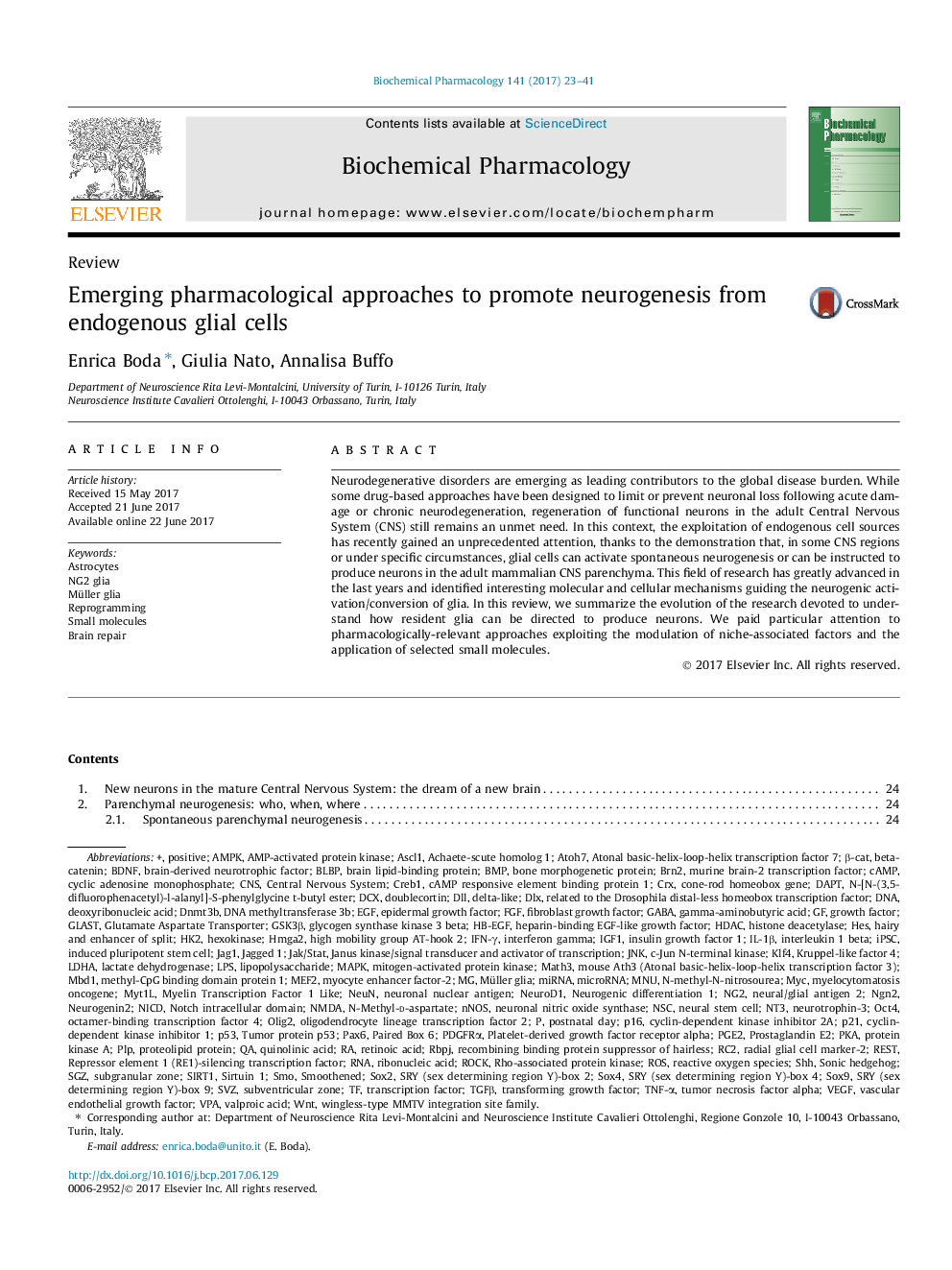| Article ID | Journal | Published Year | Pages | File Type |
|---|---|---|---|---|
| 5551950 | Biochemical Pharmacology | 2017 | 19 Pages |
Neurodegenerative disorders are emerging as leading contributors to the global disease burden. While some drug-based approaches have been designed to limit or prevent neuronal loss following acute damage or chronic neurodegeneration, regeneration of functional neurons in the adult Central Nervous System (CNS) still remains an unmet need. In this context, the exploitation of endogenous cell sources has recently gained an unprecedented attention, thanks to the demonstration that, in some CNS regions or under specific circumstances, glial cells can activate spontaneous neurogenesis or can be instructed to produce neurons in the adult mammalian CNS parenchyma. This field of research has greatly advanced in the last years and identified interesting molecular and cellular mechanisms guiding the neurogenic activation/conversion of glia. In this review, we summarize the evolution of the research devoted to understand how resident glia can be directed to produce neurons. We paid particular attention to pharmacologically-relevant approaches exploiting the modulation of niche-associated factors and the application of selected small molecules.
Graphical abstractDownload high-res image (102KB)Download full-size image
